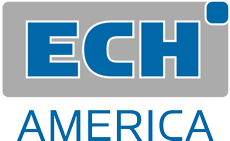Water Content in Oils
Determination of Water Content in Oils for Quality and Reliability
- Overview Karl Fischer Titrators
- Datasheet Aquamax KF PLUS
- Datasheet Aquamax KF PRO LPG
- Datasheet Aquamax KF PRO OIL
- Datasheet Aquamax KF SWOP Box
- Datasheet Aquamax KF Online
- Datasheet AQUA 40.00 Basic Module
- Datasheet AQUA 40.00 Vario and Vario PLUS
- Datasheet Aqua 40.00 High Tempertature Oven HT 1300
Abstract:
The presence of water in oils, particularly in transformer oils, lubricants, and hydraulic fluids, poses a significant risk to the performance, longevity, and safety of electrical and mechanical systems. Accurate measurement of water content is essential for preventive maintenance, ensuring insulation properties, and protecting critical infrastructure.
Introduction:
Oils are widely used in high-voltage equipment, industrial machinery, and transportation systems. Even minimal moisture contamination can lead to:
- Decreased dielectric strength in insulating oils
- Accelerated aging and oxidation of lubricants
- Corrosion and mechanical damage in hydraulic systems
Therefore, precise water content determination in oils is vital for maintaining operational safety, minimizing downtime, and extending equipment lifetime.
Measurement Principle:
The standard method for measuring water content in oils is Karl Fischer titration, recognized for its high sensitivity and selectivity for water.
Both coulometric (for low water concentrations) and volumetric (for higher water levels) titration techniques are applied depending on the oil type and required detection range.
For viscous or contaminated oil samples, thermal extraction combined with coulometric detection ensures that all water is released and accurately quantified.
These methods comply with international standards such as ASTM D1533 (water in insulating liquids) and IEC 60814.
System Overview:
Modern oil water content analyzers offer:
- Automated sample handling for improved reproducibility
- High sensitivity, detecting water contents down to 0.1 ppm
- Built-in evaporation units for thermal extraction of bound moisture
- User-friendly software with comprehensive reporting and trend analysis
Applications:
Key application areas include:
- Monitoring of transformer oils in power grids and substations
- Quality control of lubricants in manufacturing and automotive sectors
- Moisture testing in turbine and hydraulic oils
- Research on aging behavior of insulating fluids
Continuous monitoring of water content supports predictive maintenance strategies and reduces the risk of sudden equipment failures.
Conclusion:
Reliable determination of water content in oils is critical for ensuring the efficiency, reliability, and longevity of industrial and electrical systems. State-of-the-art water analysis systems offer fast, accurate, and standard-compliant results, forming the foundation for proactive maintenance and quality assurance.
Articles on PETRO Online
